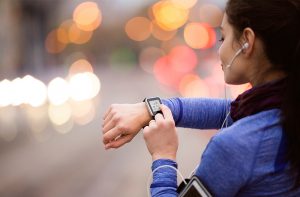5
Marco Guareschi
Need to update image citations. Needs more information to make chapter more substanative. Combine with Previous Chapter?
Introduction
Even before the COVID-19 pandemic, getting medical treatment presented a set of unique challenges. From waiting in emergency room lines to worrying about what procedures insurance would cover. COVID-19 has not only magnified these problems, but also made routine and scheduled doctors appointments much more difficult and risky than they were before. Thankfully, we have risen to the challenge of this added problem of contracting COVID-19 and launched a modern wave of healthcare: telehealth. Digital health might have risen out of necessity to allow patients to receive medical attention during COVID-19, but it poses a legitimate pathway for the future of healthcare even after the pandemic has ended.
Connection to STS Theory
utilized during COVID-19, but it is also used to provide healthcare to people in rural areas who may not have funds or transportation to regularly see a doctor. Telehealth is a constantly evolving technology that has been more customary in today’s societies than ever before.
Integration of Technology in Healthcare

The improvement of patient access through technology began long before 2020. As early as the 19th century, newspaper articles envisioned a future of using the telephone to reduce office visits. The National Aeronautics and Space Administration (NASA) was actually one of the early drivers behind the development of remote monitoring to check on the health of astronauts in orbit (Nesbitt, 2012). More recently, the healthcare industry showed more widespread trends toward the integration of technology in remote diagnostics. Specifically, the use of wearable technology, most notably smart watches, doubled from 2014 to 2016, and the functionality and accuracy of its sensors have grown with it (Paré et al., 2018).
Spotlight on Digital Health

COVID-19 has put the spotlight on digital health tools like telehealth and remote monitoring. When the pandemic first started, many people were prohibited from entering hospitals, surgeries, and even routine doctor visits were postponed, which was very concerning to the health of society (Abu Hilal, 2020). Telehealth can be used for screening COVID-19, testing recommendations, guidance on isolation or quarantine, general health care (wellness visits, blood pressure control, advice about certain non-emergency illnesses, like common rashes), prescriptions for medication, nutrition counseling, and mental health counseling (COVID-19: Telemedicine, 2020). The spotlight was placed on telehealth and remote monitoring at this time to ensure that society was able to remain healthy. This evidence shows that online appointments were utilized to keep doctors and patients safe from COVID-19.
Voices from Clemson Undergraduate Students
Telehealth has allowed everyone to receive medical attention during the pandemic.
Telehealth after COVID-19
Based on such positive results of its use, telehealth may be a more of a permanent option for some after the pandemic is over. Rural areas without easy access to healthcare may continue to utilize online healthcare even after COVID-19 to ensure everyone has access to the medical attention they need (Landi, 2020). This may also be more affordable for those who are unable to make routine doctor’s visits for various monetary reasons. According to mHealth intelligence media, “sixty-eight percent said they planned to further invest in telehealth following the public health emergency” (mHealthIntelligence, 2020). The online monitoring used and developed during the pandemic may very well become a crucial part of medicine in the future.
Healthcare for all
Even patients who currently have COVID-19 can receive treatment, medicine, and medical advice without spreading the virus. Furthermore, people who require medical attention, but are not allowed in the hospital, can also see doctors online to receive medical help (Harrison, 2020). Remote access to healthcare services may increase participation for those who are medically or socially vulnerable or who do not have ready access to providers. Remote access can also help preserve the patient-provider relationship at times when an in-person visit is not practical or feasible (Centers for Disease Control and Prevention, 2020).
Conclusion
The COVID-19 pandemic has led to the utilization and further development of digital health options to ensure physician and patient safety in the medical field by enabling physicians to treat patients virtually. This has afforded everyone the opportunity to receive medical attention, leading to a healthier society, even during these difficult times. Telehealth has the potential to revolutionize the ever-changing world of medicine and will be essential in creating a healthier society.
References
Abu Hilal, M et al. “Early Look at the Future of Healthcare During the COVID-19 Pandemic.” British journal of surgery 107.7 (2020): e197–e197. https://bjssjournals.onlinelibrary.wiley.com/doi/10.1002/bjs.11666
COVID-19: Telemedicine – What does it mean and why should you care? (n.d.). Retrieved November 09, 2020, from https://www.cdc.gov/coronavirus/2019-ncov/global-covid-19/telemedicine.html
Harrison, Dean. “Letter to Our Patients.” Northwestern Medicine, www.nm.org/conditions-and-care-areas/infectious-disease/covid-19/letter-to-our-patients
Keri, Vishakh C et al. “Tele-healthcare to Combat COVID -19 Pandemic in Developing Countries: A Proposed Single Centre and Integrated National Level Model.” The International journal of health planning and management (2020): n. pag. Web.
Landi, Heather. “The COVID-19 Pandemic Will Have a Long-Term Impact on Healthcare. Here Are 4 Changes to Expect.” FierceHealthcare, 18 May 2020, www.fiercehealthcare.com/tech/4-ways-healthcare-will-change-from-impact-covid-19-experts-say.
Nesbitt, Thomas S. (2012, Nov 20). The Evolution of Telehealth: Where Have We Been and Where Are We Going? The Role of Telehealth in an Evolving Health Care Environment: Workshop Summary. Board on Health Care Services; Institute of Medicine. Washington (DC): National Academies Press (US). https://www.ncbi.nlm.nih.gov/books/NBK207141/
MHealthIntelligence. (2020, June 25). Telehealth Will Continue to Grow After Coronavirus Pandemic. Retrieved November 09, 2020, from https://mhealthintelligence.com/news/telehealth-will-continue-to-grow-after-coronavirus-pandemic
Paré, G., Leaver, C., and Bourget, C. (2018). Diffusion of the Digital Health Self-Tracking Movement in Canada: Results of a National Survey. Journal of Medical Internet Research, 20(5), e177. https://doi.org/10.2196/jmir.9388
Turner-Lee, Nicol, and Niam Yaraghi. “How to Make Telehealth More Permanent after COVID-19.” Brookings, Brookings, 4 Sept. 2020, www.brookings.edu/blog/techtank/2020/09/04/how-to-make-telehealth-more-permanent-after-covid-19/.
“Using Telehealth to Expand Access to Essential Health Services during the COVID-19 Pandemic.” Centers for Disease Control and Prevention, Centers for Disease Control and Prevention, www.cdc.gov/coronavirus/ 2019-ncov/hcp/telehealth.html.
Images
Image 1: https://telehealth.hhs.gov/
Image 2:
